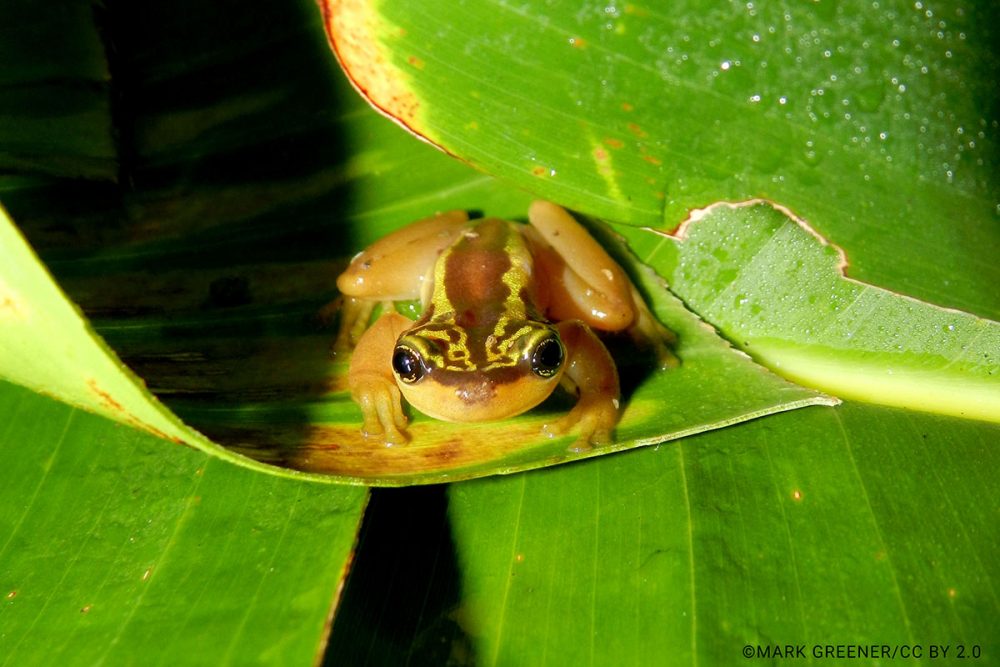About
Recent genetic and behaviour analysis of the taxonomic relationship between other tree frogs and the golden tree frogs has provided evidence for it to be placed in a separate genus known as Phytotriades, where this is the sole member and therefore monotypic.
They are part of the Hylidae or “Treefrogs” families, which have a fossil record going back to the Palaeocene (65 to 53 million years ago), suggesting the hylid frog lineages originated either in the late Cretaceous or early in the Cenozoic period, around the time of the extinction of the dinosaurs. This species is highly territorial, as they protect their bromeliad plant in which they live and breed. They possess serrated teeth and sharp fangs that line their jaws which are used, particularly by males, to fight off one another. The species appears to be specialized for life in high humidity relatively cool tropical montane forests. A vast amount of rainfall of around 5m per year is known to occur at these sites and the woodland is shrouded in cloud cover that is cool and misty both during the day and night. With the threat of global climate change, specifically warming, temperatures are expected to rise, resulting in the uphill retreat of cool-adapted tropical montane forests and the shrinking range of this frog. It is unknown whether this species is present within any protected areas, but maintenance and protection of its known habitat is urgently required.
- Order: Anura
- Family: Hylidae
- Population: Very Rare
- Trend: decreasing
- Size: 29-35mm
EDGE Score
Distribution
This species is known from the summits of El Cerro Del Aripo and El Tucuche, the two highest peaks in Trinidad, and is also found from Cerro Humo on the Paria Peninsula, Venezuela on the adjacent mainland.
Habitat and Ecology
The Golden Tree frog inhabits montane rainforest and elfin woodland, where they reside in the giant epiphytic bromeliads, which grows to 23-31m above ground level. The tadpoles of these species feed on algae that grow on the surface of the bromeliads leaves. Females lay their eggs in the water collected by the leaves of the bromeliad.
